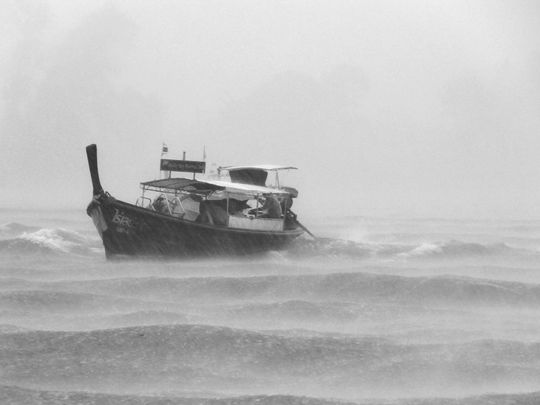
While India is struggling to survive a devastating COVID-19 pandemic, its east coast suffered the wrath of a severe cyclonic storm in the last week of May this year.
Though the Odisha state was the epicentre of the landfall, affecting 6 million of its population, Indian media’s focus was primarily directed at the ego battle between the Prime Minister of India and the Chief Minister of West Bengal over the damage-assessment protocol.
In the political slugfest, Odisha’s smart and professional management of another major natural disaster was more or less overlooked, but not by everyone. Once again, the UN Office for Disaster Reduction acknowledged Odisha’s disaster management strategy and preparedness, which it had also done after another major cyclone in 2013.
Odisha's unique problems
Odisha is one of the poorest states in a developing country - India. Due to its subtropical coastal location, the state often gets exposed to natural hazards. Besides high floods, it also experiences cyclonic storms at regular intervals.
In 1999, in a major cyclonic storm, commonly referred to as ‘Super Cyclone’, 10,000 people lost their lives. Though the state is not new to the danger of cyclonic storms, climate change has increased the number and intensity of these natural hazards in recent years.
After the 1999 Super Cyclone, the next major one to hit the state and the country was Cyclone Phailin in 2013. Since then, extremely severe and severe cyclonic storms have become very regular for the state.
Odisha faced Cyclone Hudhud in 2014, Cyclone Titli in 2018, Cyclone Fani in 2019, Cyclone Amphan in 2020, and the recent one, Cyclone Yass in 2021. Though the Super Cyclone in 1999 had caused massive loss of lives, the recent ones of nearly that calibre, particularly Cyclone Phailin in 2013 and Cyclone Fani in 2019, have led to a negligible number of human casualties, and in most cases, no death at all.
Saving lives during disasters
What made this possible for a poor state like Odisha to achieve this success in saving lives during natural disasters? Undoubtedly, climate change has increased the risk of intensifying tropical storm’s wind speed, particularly at the time of landfall.
At the same time, the expected sea-level rise enhances the fear of future storms becoming more damaging. Thus, the proper understanding of the formula for Odisha’s success in disaster risk governance can help other poor and developing regions in tropical and subtropical climatic zones to be better prepared to face natural disasters.
I grew up in an Odisha village along the coastline of the Bay of Bengal and have witnessed several cyclonic storms as a child. People in that region are used to this natural disaster. However, the intensity and ferociousness of the 1999 Super Cyclone changed their outlook on how to adapt to the growing danger of these storms.
Anyone in a village who can build a concrete roof did that. Immediately after the Super Cyclone, many states came forward to help. Several damaged school and office buildings were rebuilt as concrete structures, which work as storm shelters when needed.
The collective memory of the 1999 devastation is still powerful. People are more than ever taking cyclone warnings seriously and following necessary steps to save themselves, like not going fishing in the sea. The instructions from authorities for evacuation and moving to storm shelters are being adhered to. In the last week of May, 700,000 people had left their homes to take refuge in storm shelters during Cyclone Yass.
Experience and collective memory
Adaptation through experience and collective memory is essential in any natural disaster governance mechanism but not unique to Odisha. What has made Odisha a standout case in the world is the commitment of the state’s political leadership in not repeating the mistakes and mismanagement of 1999.
The present Chief Minister of Odisha, Naveen Patnaik, came to office only after five months of the 1999 Super Cyclone in March 2000, and since then, he has been in power.
Immediately after the Super Cyclone, in December 1999, the Odisha State Disaster Management Authority (OSDMA) was established as a specialised government agency to respond to natural or man-made disasters to enhance capacity building in disaster resiliency and response. Odisha was the first state in India to do so.
After taking over the power, Naveen Patnaik has significantly strengthened the OSDMA as an efficient organisation to increase community resilience and promote a culture of cooperative disaster preparedness.
The success of OSDMA influenced India’s decision to adopt the National Disaster Management Act in 2005 and the establishment of the National Disaster Management Authority in 2006. Odisha’s success was also cited as an example while the world agreed on the Sendai Framework for Disaster Risk Reduction in 2015.
The key to Odisha’s success in disaster management is its political leadership. Chief Minister Naveen Patnaik’s commitment to ‘zero casualty’ target at the time of cyclonic storm puts the state bureaucracy and the OSDMA to do everything possible to evacuate and rescue people in danger and provide relief.
Odisha has clearly shown, if there is a political will, the state might be poor and underdeveloped with poor infrastructure, but it can ensure that its people remain secure at the time of natural disasters. This is the reason while other rich and powerful states in India were quarrelling to get central assistance for post-cyclone recovery, Odisha could afford not to ask for any support.
The takeaway for others from Odisha’s success story is that a country needs political commitment and smart management of limited available resources to provide basic security of survival to its people at the time of increasingly devastating man-made or natural disasters.
Political leaders should stop finding excuses for failing to protect people from disasters; the buck stops with them.






